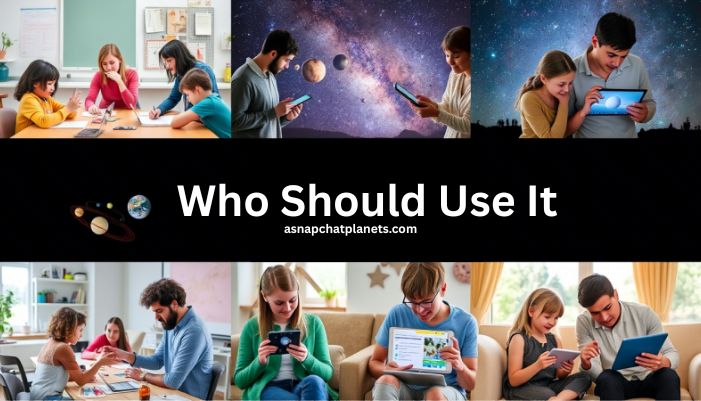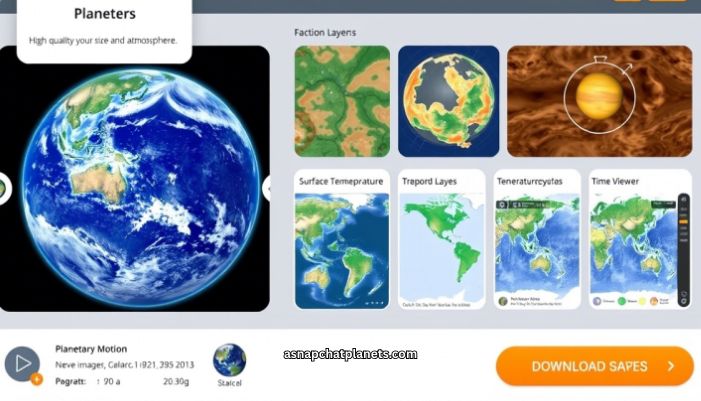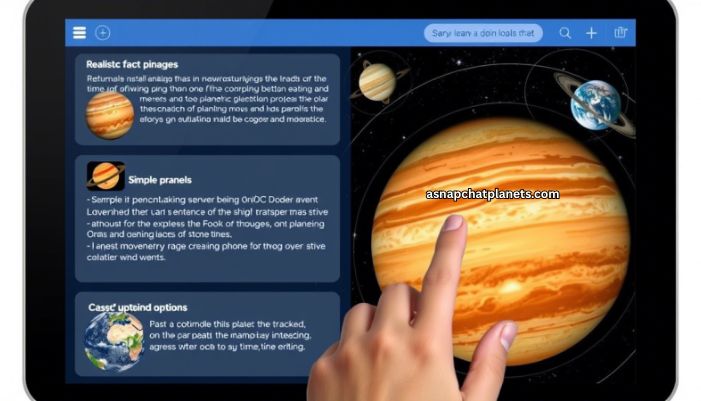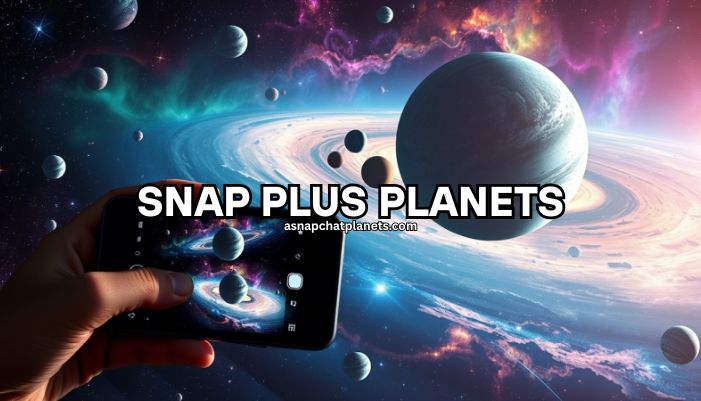You want to see the planets up close. You want an easy tool that not only gives you information, but also shows clear pictures, simple facts, and a real, immersive feel. Snap Plus Planets gives you all of that.
This smart tool helps you learn quickly, without any hassle. You’ll find real images of planets, beautifully designed maps, interesting facts, and easy-to-understand info — no need for a science textbook.
No complicated research. No long study sessions. Just open the site, pick a planet you like, and start exploring.
Snap Plus Planets is made for anyone who’s curious about the universe but wants to learn in a simple, fun, and enjoyable way. It makes science more accessible, exciting, and useful for everyone.
What Snap Plus Planets Does
Snap Plus Planets helps you explore the solar system with just a few clicks. It shows real images of planets, gives you simple facts, and lets you see how planets move in space.
You can:
-
View recent photos of each planet
-
Learn key facts like size, orbit, and surface features
-
Explore maps that show terrain, temperature, and atmosphere
-
Track how a planet moves over time
-
Download pictures and data for school or personal use
You don’t need special tools. Just open the site or app, pick a planet, and start exploring. It’s that easy.
Who Should Use It

Snap Plus Planets is made for anyone who wants to learn about space. You don’t have to be a scientist or an expert. If you’re curious about planets, this tool is perfect for you. You can use it in your own way, and if you want, you can even teach others with it.
It works well for:
-
Students who need images or facts for school projects
-
Teachers who want to show planets clearly in class
-
Parents who want to make learning fun at home for their kids
-
Space fans who love exploring the solar system
-
Writers and bloggers who need clear visuals and data
-
Homeschoolers who are looking for easy science tools
If you enjoy learning by seeing and doing, Snap Plus Planets will support you well and make it easy for you to learn and explore.
Main Features You Will Use

Snap Plus Planets gives you several tools to explore planets really well. Below are some main features that you’ll likely use the most:
-
Snap Image View
When you click on a planet, you get a real, high-quality photo. You can zoom in to see details like craters or rings. This is a great feature. -
Planet Facts Panel
You’ll find quick facts about each planet — size, distance from the sun, atmosphere, and much more. You can also learn many other things. -
Maps and Layers
You can view different types of maps — surface maps, temperature heat maps, and orbit paths. These help you understand each planet better and can be useful for your projects. -
Time Viewer
You can watch how planets move over days, weeks, or months. It’s easy to follow changes and track their paths. -
Download Option
If you want, you can save images or data to your device. You can use these anytime for school projects, presentations, or just for fun.
All these features make exploring planets easy and enjoyable. You can use them anytime you want, no matter how much time you have.
How to Use Snap Plus Planets
Using Snap Plus Planets is very easy. Here are some steps you can follow to start exploring planets easily, no matter how much time you have. Let’s talk about them below:
-
First, open Snap Plus Planets in your web browser or app.
-
Choose the planet you want to explore from the list.
-
Click the “Snap” or view button to load the latest image.
-
Use the tabs to carefully check facts, maps, and orbit details.
-
If you want, you can download images or data to your device.
You can use it on a phone, tablet, or computer. No special equipment or skills are needed. Just click and explore. It’s a pretty easy system for everyone.
What Makes It Useful

Snap Plus Planets makes learning about space much easier and faster. Here’s why it helps you:
-
Real Images
You get to see real photos from space, not drawings or cartoons. -
Simple Facts
All the important information is right there. You don’t have to struggle reading long articles. -
Track Changes
You can watch with your own eyes how planets move or change over time. -
Easy to Share
If you want, you can download images and facts to use in projects or easily share with friends who are interested.
These tools always save you time and help you learn in a clear, practical way.
Good Ways to Use It
For School
First, choose a planet. Snap a photo. Use the map and facts for your report. Add the image to your slide. Your work is done.
For Teachers
Show the planet on a big screen. Ask the kids what they see. Zoom in on fun spots like craters or rings. This will help everyone understand better.
For Fun
If you just want to see planets up close, open it. Click. Look. Learn. It will feel like you are traveling through space from home. You’ll get a totally different experience.
Tips for Better Use
If you want to get better results from Snap Plus Planets, try these tips:
- Use a bigger screen like a tablet or computer so you can get a clearer view.
- Zoom in to see details like craters, rings, or storms.
- Check different maps, such as temperature or surface views.
- Watch the time viewer to see how planets change over days or months.
- If you want to print or share, download high-quality images; otherwise, you won’t get the proper feel of the images.
- Use the facts panel to add quick info to your projects or presentations, which will make your work look even better.
Problems You May See and How to Fix Them
Sometimes, when you use Snap Plus Planets for the first time, you might face some issues. Here are common problems and their solutions:
Images load slowly
Check your internet connection. If possible, try using a lower image quality.
Images don’t show up
Refresh the page. Make sure you have selected the correct planet and date.
Can’t download files
Check your device’s storage space. Also, make sure your browser allows downloads.
If the problem continues after trying these steps, close and reopen the app or browser. These steps usually fix most issues easily.
Why People Like It
Why People Like It
People like Snap Plus Planets because it makes exploring space very easy. That’s why it’s becoming more popular.
It shows real photos, not drawings.
It gives simple facts that everyone can easily understand.
It helps students and teachers learn.
It saves time because everything is in one place.
You can use it on phones, tablets, or computers without any extra tools.
This tool helps you learn about space and have fun without stress or confusion, making it easy for you to use.
FAQ
What planets are on Snap Plus Planets
You can see Mercury, Venus, Earth, Mars, Jupiter, Saturn, Uranus, Neptune, and Pluto.
Does it update often
Yes. The tool uses space data from real sources. It updates photos often.
Do I need to download anything
No. You only need a web browser or the app.
Can I use it without the internet
You can save images for later. But you need the internet to load the tool.
Is it free
Yes. You can use most features for free. Some advanced tools may cost extra.
What kind of files can I save
Photos are saved as JPEG or PNG. Data can be saved as CSV or text files.
Can I use it for my project or class
Yes. You can copy images or facts. You can use them in your report or slide.
Final Thoughts
Exploring planets with Snap Plus Planets is very easy and fun. You get clear images and simple facts all in one place, making your planet exploration even better.
You don’t need to read long books or use special tools. Just open the site, pick a planet, and start learning. You’ll understand how it works by yourself.
Whether it’s for school, studying, or just for fun, this tool helps you see space in a completely new way, allowing you to learn a lot.
Give it a try and explore the planets in your own way.
